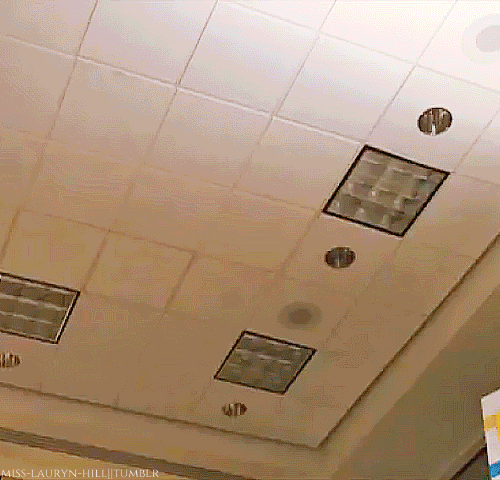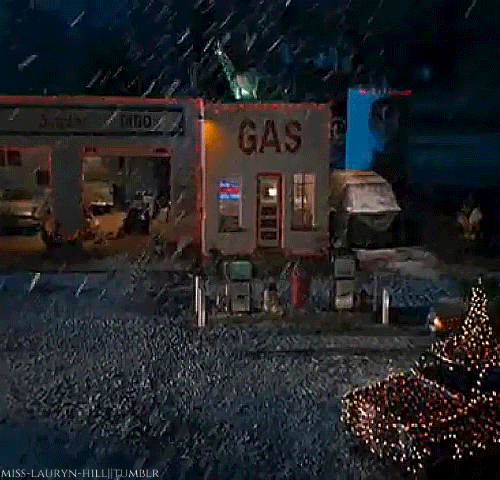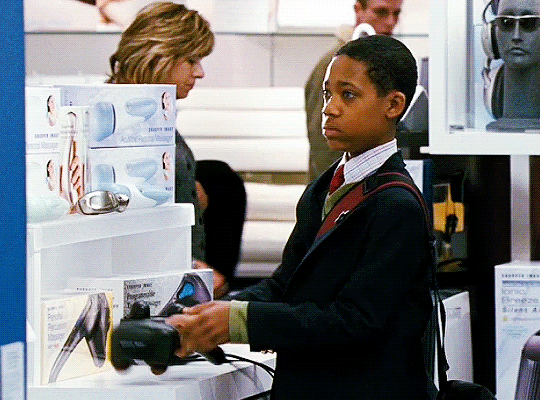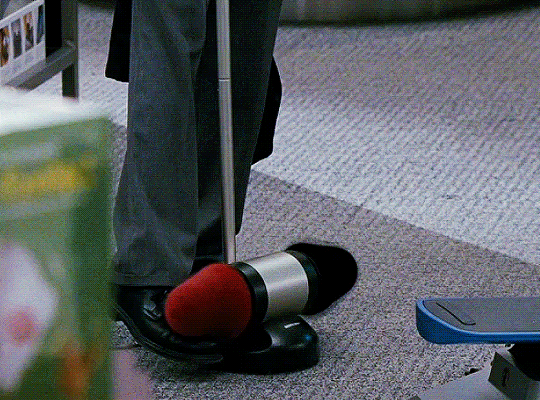#unaccompanied minors
Photo










Favorite Christmas Houses
National Lampoon's Christmas Vacation
Home Alone
Miracle on 34th Street
Deck The Halls
The Family Stone
Christmas With The Kranks
Four Christmases
The Holiday
Unaccompanied Minors
The Santa Claus
#merry christmas everyone#christmas#christmas houses#its an aesthetic#movie#movies#filmedit#filmedits#holiday goodness#national lampoon#home alone#miracle on 34th street#deck the halls#the family stone#christmas with the kranks#four christmases#the holiday#unaccompanied minors#the santa claus#gif#gifset#gifs#can i live in some of these houses#like gorgeous city
463 notes
·
View notes
Text

Happy Birthday Paget 🥳🎂🎈🎁🎉
March 10,1969
Buon Compleanno 🥳🎂🎈🎁🎉
10 Marzo 1969
#paget brewster#actress#world cinema#cinema#movies#film#cinemetography#filmography#comedy movies#drama movies#tv shows#90s movies#2000s movies#desperatebutnotserious#the adventures of rocky and bullwinkle#man of the house#unaccompanied minors#sublime#axis#friends#huff#loveandmoney#community#criminal minds#emily prentiss#celebrity#happy birthday
3 notes
·
View notes
Photo







25 DAYS OF GIFMAS DAY 17: UNACCOMPANIED MINORS (2006)
#unaccompanied minors#tyler james williams#quinn shepard#brett kelly#gia mantegna#dyllan christopher#userrobin#moviegifs#filmedit#25 days of gifmas#my gifs: movies
25 notes
·
View notes
Text
youtube
THE PILE PRESENTS: X-Play - Super Dragon Ballers | 9/13/06
The TV show that's also a charitable organization helping WoW addicts transition back into conventional society.
(4GTV - THE 24/7 DESTINATION THAT NEVER STOPS PLAYING! CLICK HERE!)
#The Pile#G4#X-Play#Rule of Rose#Homeworld 2#Micro Machines V4#Lost Planet: Extreme Condition#The Chronicles of Riddick: Escape from Butcher Bay#Destroy All Humans!#Kingdom Hearts#Pac-Man World Rally#Super Dragon Ball Z#Just Cause#Attack of the Show!#G-Spot#Cheat!#The Block#Unaccompanied Minors#Grand Theft Auto: Liberty City Stories#GameTap#Verizon#LG#Vonage
2 notes
·
View notes
Text
Children deemed adults by Home Office could be deported to Rwanda
From the article:
'...We are gravely concerned that unaccompanied children – who have been incorrectly age-assessed to be adults – will be removed to Rwanda with hugely damaging repercussions on their safety and wellbeing.”
It adds: “Currently, there are no safeguards in place for children who say they are children but are treated as adults by the Home Office.”
Consortium members said they regularly see the Home Office treating children as young as 14 as adults. Data from 55 local authorities gathered from freedom of information responses obtained by the Helen Bamber Foundation shows that in 2021, more than 450 young people were referred to children’s services after being sent to adult accommodation or detention. Three-quarters were found to be children. Initial data relating to 2022 indicates this problem continues.'
#uk politics#never tory#immigration#asylum seekers#refugees#uk rwanda refugee deal#hostile environment#unaccompanied minors
67 notes
·
View notes
Text

2023 Holiday Sticker Sheets are here and they ship FREE! Grab one now & add them to your holiday cards, gifts, or keep them for yourself!
Shop here!
#home alone#the santa clause#bernard the elf#jingle all the way#the polar express#unaccompanied minors#jack frost#eight crazy nights#holiday movies#christmas movies#stickers#sticker sheet#shop small
4 notes
·
View notes
Text
You know what would be a really fun movie? A Home Alone and Unaccompanied Minors crossover.
3 notes
·
View notes
Text
JUST FOUND OUT THAT THE GUY FROM ABBOTT ELEMENTARY IS ALSO THE GUY FROM UNACCOMPANIED MINORS????AN ICON????
5 notes
·
View notes
Text
Calling all "found family" trope fans
If you're a big fan of this trope, I've got a perfect holiday movie for you. It's called Unaccompanied Minors. It's about five kids stranded in an airport on Christmas Eve, running from the owner of the airport. It was made in 2006 (so it's a little dated) and directed by Paul Feig. It's hilarious and filled to the brim with slapstick, cameos from famous actors, as well as dealing with serious topics, such as divorce, kids with abandonment (and mommy and daddy) issues. It's rated G, so more than a little cheesy. However, I highly recommend it. If you don't want to rent it, you can find it for free on HDtoday.tv
2 notes
·
View notes
Photo





#Me At Brookstone In The 90′s
#i love this movie#favorite of favorites#baby tyler james williams#i love him#iconic#legends only#gifset#gifs#gif#christmas goodness#unaccompanied minors#love#Charlie Goldfinch#movie#movies#filmedits#filmedit#relatable#relatable gifs#relatable gif#remember brookstone#notalgia#childhood#me same#90's#90s kid
26 notes
·
View notes
Text
0 notes
Text
Unaccompanied Minors and South Carolina's Foster Care System: A Closer Look
Unaccompanied Minors and South Carolina’s Foster Care System: A Closer Look. In recent years, the issue of unaccompanied minors navigating the U.S. foster care system has garnered significant attention. South Carolina, like many other states, faces unique challenges and opportunities in addressing the needs of these vulnerable youth. This blog post explores the complexities surrounding…

View On WordPress
#Child Welfare in South Carolina#Community Support for Foster Care#Cultural Sensitivity in Foster Care#Education for Immigrant Minors#Immigration and Foster Care#Legal Assistance for Unaccompanied Minors#South Carolina Foster Care#Specialized Services for Minors#Unaccompanied Minors#Unaccompanied Minors in the U.S.#Unaccompanied Minors&039; Challenges#Vulnerable Youth Support
0 notes
Text

In today's post, we are discussing airport tags. Starting from the far left;
Crew Equipage Tag:
The crew equipage tag is a specialized tag used at airports to identify and track the personal belongings and equipment of airline crew members. It serves several important purposes:
Identification: Each crew member is assigned a unique crew equipage tag, typically attached to their luggage or personal items. This tag helps in identifying and distinguishing their belongings from those of other passengers.
Security Screening: Crew members often carry various equipment and tools necessary for their duties, such as uniforms, manuals, electronic devices, and specialized gear. The crew equipage tag helps security personnel to differentiate crew items from passenger luggage during security screening procedures.
Quick Retrieval: Airline crew members frequently have tight schedules and need to access their equipment swiftly. The equipage tag allows their items to be easily identified and retrieved, saving time and ensuring efficiency.
Priority Handling: Airlines usually prioritize the handling of crew luggage to ensure that it reaches the aircraft or the crew's accommodation promptly. The crew equipage tag indicates that the item belongs to the airline's crew, allowing ground staff to give it priority treatment.
Baggage Tracing: In the event that a crew member's luggage goes missing or gets misplaced, the equipage tag assists in tracing the bag back to the owner. The unique identifier on the tag can be cross-referenced with flight manifests and records to locate the missing item.
Overall, the crew equipage tag plays a vital role in streamlining operations and enhancing the efficiency of airline crew members by facilitating the identification, security screening, retrieval, and tracing of their belongings at airports.
#Unaccompanied Minor:
The unaccompanied minor (UM) tag is a special identifier used at airports to assist in the safe and secure travel of children who are traveling alone without a parent or guardian. The tag is typically attached to the child's clothing or carried in their hand, and it serves several important purposes:
Identification: The UM tag contains essential information about the child, including their name, age, flight details, contact information for the child's parents or guardians, and any special instructions or requirements for the child's care during the journey. This identification ensures that airport and airline staff can easily identify and assist the unaccompanied minor.
Priority Assistance: Airlines typically provide extra assistance and supervision for unaccompanied minors. The UM tag allows airport and airline personnel to quickly identify these children and provide the necessary support throughout their journey. This assistance may include escorting the child through security checkpoints, helping them navigate the airport, and ensuring they board the correct flight.
Security and Safety: The UM tag helps ensure the security and safety of unaccompanied minors. It alerts airport and airline staff to the special needs of these children, such as preventing them from leaving the airport unattended or ensuring they are handed over only to authorized individuals at their destination. The tag also helps prevent unauthorized individuals from approaching or claiming the child.
Communication and Monitoring: The UM tag facilitates communication between various airport and airline staff involved in the care of unaccompanied minors. It enables easy identification and tracking of the child's whereabouts, making it possible to provide updates to parents or guardians throughout the journey.
It's important to note that each airline may have its specific procedures and requirements for unaccompanied minors, including age restrictions, mandatory assistance fees, and additional documentation. Parents or guardians should contact the airline directly to obtain accurate and up-to-date information regarding their child's travel as an unaccompanied minor.
#Stanby:
The standby tag is a label or indicator used at airports to designate passengers who are seeking to travel on a particular flight but do not have a confirmed reservation. It serves several purposes related to managing flight availability and accommodating passengers on a standby basis:
Priority Ranking: When passengers are on standby, the airline assigns them a priority ranking based on factors such as ticket type, frequent flyer status, or the time they arrived at the airport. The standby tag helps identify these passengers and indicates their position in the standby queue. Passengers with higher priority rankings are more likely to be accommodated on the flight if seats become available.
Seat Allocation: Standby passengers are typically assigned seats based on availability once all confirmed passengers have been accommodated. The standby tag allows airline staff to easily identify and allocate seats to these passengers if space becomes available on the flight. The tag may also indicate the flight number or destination to ensure correct seat assignments.
Communication: The standby tag helps airport and airline personnel communicate and coordinate with passengers who are waiting for available seats. It serves as a visual indicator for staff members to identify and approach standby passengers when providing updates on seat availability or any changes to the flight status.
Gate Management: At the departure gate, the standby tag allows gate agents to efficiently manage the boarding process and seat assignments. They can quickly identify standby passengers and provide them with updates, inform them of available seats, and facilitate their boarding if they are cleared to travel.
It's important to note that standby travel is subject to seat availability and is typically associated with various conditions and restrictions. Standby passengers may be required to wait for multiple flights, and there is no guarantee of being accommodated on a desired flight. Airlines have specific policies and procedures for standby travel, and passengers should consult with the airline directly for accurate and up-to-date information.
#Fragile:
The fragile tag is a label attached to luggage or packages to indicate that the contents are delicate or breakable. It serves as a visual indicator for airport and airline staff to handle the item with extra care during loading, unloading, and transport. Here's how the fragile tag is typically used at the airport:
Special Handling: The fragile tag alerts airport and airline personnel that the item requires special handling due to its delicate nature. Baggage handlers and other staff members are instructed to handle the item carefully and take precautions to prevent damage during the various stages of handling.
Separate Storage: Luggage with fragile tags is often separated from other baggage and stored in designated areas within the aircraft or cargo hold. This separation helps reduce the chances of the item being crushed or damaged by heavier or bulkier luggage.
Priority Placement: In some cases, baggage with fragile tags may be given priority placement during loading and unloading. By ensuring that fragile items are loaded last and unloaded first, the risk of other luggage being placed on top or causing damage is minimized.
Communication: The fragile tag serves as a visual cue for airport and airline staff, indicating that the item requires additional care. It helps facilitate communication among personnel responsible for handling the luggage, ensuring that everyone involved is aware of the fragile contents and takes appropriate precautions.
It's important to note that while the fragile tag can help draw attention to delicate items, it does not guarantee that the contents will be handled perfectly or that they will arrive undamaged. Passengers should take additional steps to protect their fragile items, such as using appropriate packaging materials, securing the contents properly, and considering additional insurance coverage if necessary.
0 notes
Text
"These workers are part of a new economy of exploitation: Migrant children, who have been coming into the United States without their parents in record numbers, are ending up in some of the most punishing jobs in the country, a New York Times investigation found. This shadow work force extends across industries in every state, flouting child labor laws that have been in place for nearly a century. Twelve-year-old roofers in Florida and Tennessee. Underage slaughterhouse workers in Delaware, Mississippi and North Carolina. Children sawing planks of wood on overnight shifts in South Dakota."
"Largely from Central America, the children are driven by economic desperation that was worsened by the pandemic. This labor force has been slowly growing for almost a decade, but it has exploded since 2021, while the systems meant to protect children have broken down."
[...]✂️
️"In town after town, children scrub dishes late at night. They run milking machines in Vermont and deliver meals in New York City. They harvest coffee and build lava rock walls around vacation homes in Hawaii. Girls as young as 13 wash hotel sheets in Virginia."
[…]✂️
"These are not children who have stolen into the country undetected. The federal government knows they are in the United States, and the Department of Health and Human Services is responsible for ensuring sponsors will support them and protect them from trafficking or exploitation."
"But as more and more children have arrived, the Biden White House has ramped up demands on staffers to move the children quickly out of shelters and release them to adults. Caseworkers say they rush through vetting sponsors."
[…]✂️
"Far from home, many of these children are under intense pressure to earn money. They send cash back to their families while often being in debt to their sponsors for smuggling fees, rent and living expenses."
"Sponsors are required to send migrant children to school, and some students juggle classes and heavy workloads. Other children arrive to find that they have been misled by their sponsors and will not be enrolled in school."
[…]✂️
"Now, just a third of migrant children are going to their parents. A majority are sent to other relatives, acquaintances or even strangers, a Times analysis of federal data showed. Nearly half are coming from Guatemala, where poverty is fueling a wave of migration. Parents know that they would be turned away at the border or quickly deported, so they send their children in hopes that remittances will come back."
"In the last two years alone, more than 250,000 children have entered the United States by themselves."
"The shifting dynamics in Central America helped create a political crisis early in Mr. Biden’s presidency, when children started crossing the border faster than H.H.S. could process them. With no room left in shelters, the children stayed in jail-like facilities run by Customs and Border Protection and, later, in tent cities. The images of children sleeping on gym mats under foil blankets attracted intense media attention."
[…]✂️
"While many migrant children are sent to the United States by their parents, others are persuaded to come by adults who plan to profit from their labor."
[…]✂️
"Unlike the foster care system, in which all children get case management, H.H.S. provides this service to about a third of children who pass through its care, and usually for just four months. Tens of thousands of other children are sent to their sponsors with little but the phone number for a national hotline. From there, they are often on their own: There is no formal follow-up from any federal or local agencies to ensure that sponsors are not putting children to work illegally."
[…]✂️
"Many sponsors see themselves as benevolent, doing a friend or neighbor a favor by agreeing to help a child get out of a government shelter, even if they do not intend to offer any support. Children often understand that they will have to work, but do not grasp the unrelenting grind that awaits them."
[…]✂️
"Underage workers in Grand Rapids said that spicy dust from immense batches of Flamin’ Hot Cheetos made their lungs sting, and that moving heavy pallets of cereal all night made their backs ache. They worried about their hands getting caught in conveyor belts, which federal law classifies as so hazardous that no child Carolina’s age is permitted to work with them."
[…]✂️
"Federal law bars minors from a long list of dangerous jobs, including roofing, meat processing and commercial baking. Except on farms, children younger than 16 are not supposed to work for more than three hours or after 7 p.m. on school days."
"But these jobs — which are grueling and poorly paid, and thus chronically short-staffed — are exactly where many migrant children are ending up. Adolescents are twice as likely as adults to be seriously injured at work, yet recently arrived preteens and teenagers are running industrial dough mixers, driving massive earthmovers and burning their hands on hot tar as they lay down roofing shingles, The Times found."
"Unaccompanied minors have had their legs torn off in factories and their spines shattered on construction sites, but most of these injuries go uncounted. The Labor Department tracks the deaths of foreign-born child workers but no longer makes them public. Reviewing state and federal safety records and public reports, The Times found a dozen cases of young migrant workers killed since 2017, the last year the Labor Department reported any."
"The deaths include a 14-year-old food delivery worker who was hit by a car while on his bike at a Brooklyn intersection; a 16-year-old who was crushed under a 35-ton tractor-scraper outside Atlanta; and a 15-year-old who fell 50 feet from a roof in Alabama where he was laying down shingles."
[…]✂️
"The Labor Department is supposed to find and punish child labor violations, but inspectors in a dozen states said their understaffed offices could barely respond to complaints, much less open original investigations. When the department has responded to tips on migrant children, it has focused on the outside contractors and staffing agencies that usually employ them, not the corporations where they perform the work."
#ny times#child labor#immigrant labor#exploitation#capitalism#fruit of the loom#Cheetos#Hearthside#Unaccompanied minors#Ben & Jerry’s#Ford#General Motors#J. Crew#Walmart#Target#Whole Foods#JBS Foods
0 notes